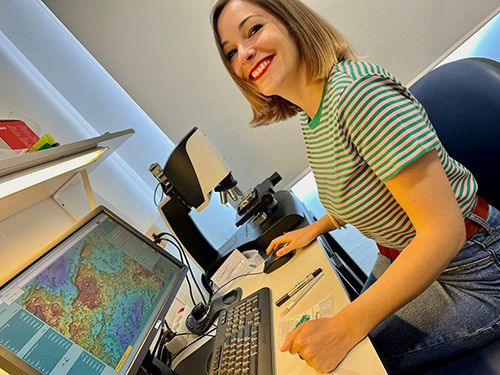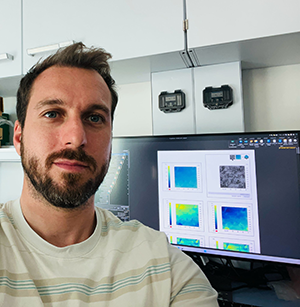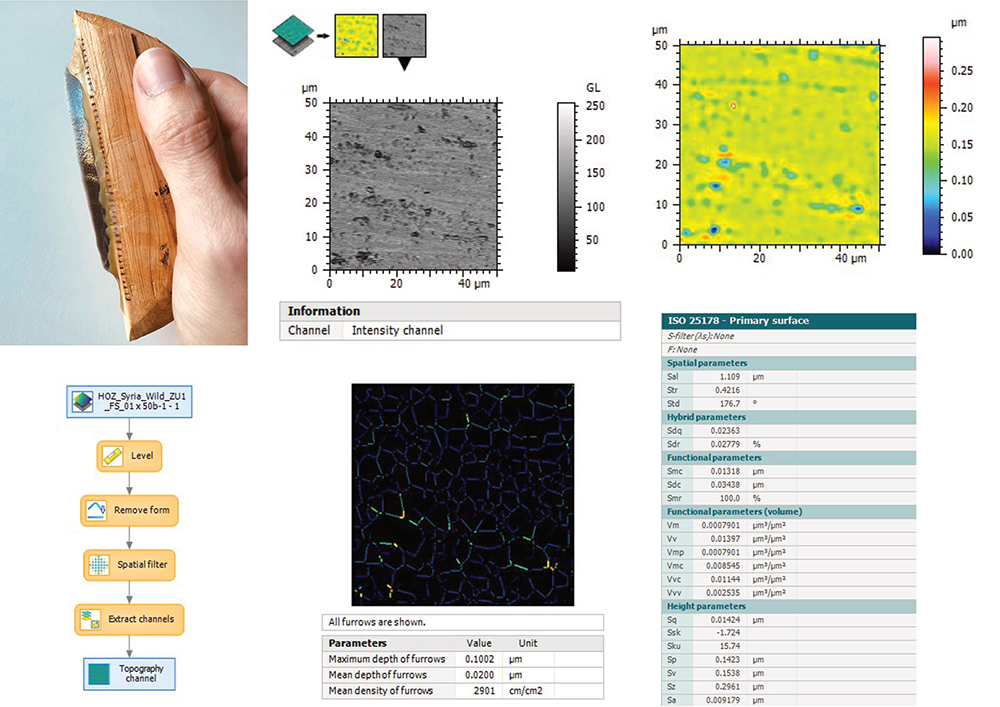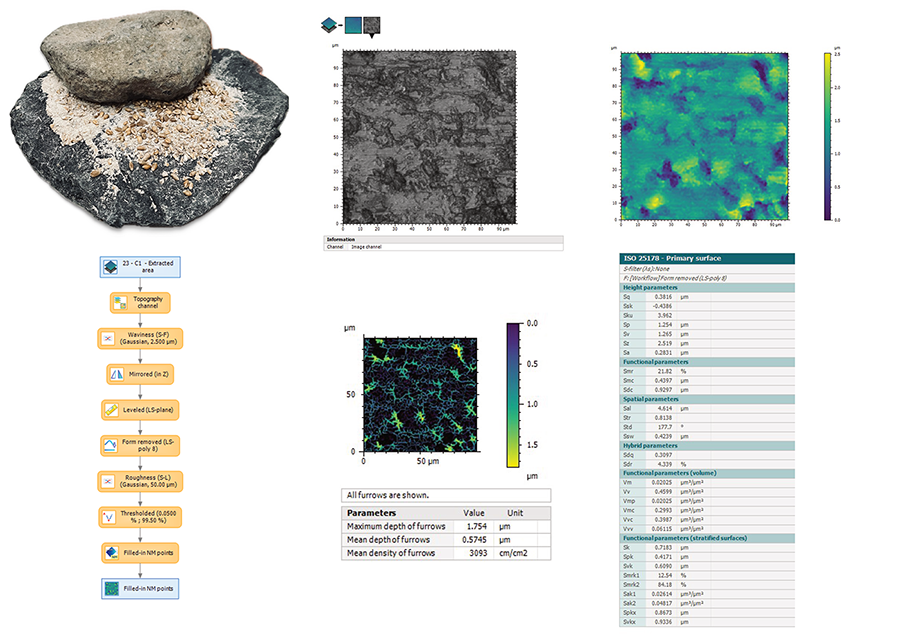Fiona Pichon, former postdoctoral researcher at Milá y Fontanals Institution for Research in Humanities (IMF-CSIC), Barcelona, Spain, is currently Associate Researcher at the Maison de l’Orient et de la Méditerranée in Lyon, France. Andrea Zupancich is affiliated to the DANTE laboratory (Diet and Ancient Technology) at the Sapienza University of Rome. Together, the two researchers discuss how the study of use-wear patterns on stone tools, combined with advanced surface analysis techniques, helps reconstruct the daily lives, technologies and social networks of early farming communities.


Please can you introduce yourself, your professional background, and how you came to be involved in your specific branch of archeology?
We are two archaeologists specializing in reconstructing past human behaviors through the study of stone tools. Our research focuses on how Neolithic communities in Southwest Asia used plants, particularly for food processing—such as harvesting and grinding cereals and legumes—as well as for other activities like crafting. We also investigate the evolution of tool technologies and how they were adapted over time to meet changing environmental and social needs.
To achieve this, we analyze use-wear traces—which are minute surface changes that occur when a tool is used. By examining these microscopic wear patterns, especially micro-polishes visible under high-power microscopes, we can determine what materials the tools came into contact with (such as plant, animal, or mineral substances), how they were worked, and even whether the materials were dry or moist. These insights help us reconstruct the daily activities, technologies, and environments of prehistoric communities.
What are your current projects?
In 2021, we were awarded two Marie Curie Fellowships as part of the HORIZON 2020 framework, for the OBSTRADE project (to FP) and PATH project (to AZ), to develop our research on:
- Obsidian knapped tools – Obsidian, a rare volcanic glass, was highly valued in ancient times due to its unique properties, such as sharpness, brilliance and suitability for toolmaking, which made it essential in prehistoric societies. In Southwest Asia, obsidian was often transported over long distances, sometimes hundreds or even thousands of kilometers, from its sources in Anatolia. Obsidian analyses have shown that its exchange patterns changed over time during the Neolithic, reflecting the rise of more complex socioeconomic systems and social networks. By studying use-wear patterns on obsidian tools, we aim to gain a deeper understanding of their purpose and significance within the first farming communities of the Neolithic, and to explore why obsidian was exchanged in such a complex way throughout the period.

Above. 3D surface analysis of an obsidian tool wear pattern performed with MountainsMap® software.
- Ground stone tools – These implements have been commonly used for processing plant foods since early prehistory. Therefore, ground stone tools are considered as prime evidence to explore behaviors related to plant exploitation and processing. In particular, by examining their function, through use-wear analysis, we can reconstruct how early farmers prepared different plant-foods ranging from cereals, legumes, tubers and fruits and understand the techniques and gestures they used. By exploring plant processing practices among early farming communities through the analysis of ground stone tools we are able to identify ancient dietary practices as well to trace the evolution of the relationship between humans and plants through time.

Above. Quantitative analysis of surface roughness on ground stone tools.
What role does MountainsMap® software play in your research?
In our research, we combine traditional archaeological techniques with cutting-edge technology, such as confocal microscopy and advanced surface analysis methods performed using MountainsMap® software, to provide more detailed insights into the use of stone tools. MountainsMap® software plays a critical role in our research by enabling us to analyze surface roughness and wear patterns on stone tools with great precision. By extracting specific surface texture parameters (according to ISO 25178 standards) and employing techniques such as Scale-Sensitive Fractal Analysis and Furrow Analysis, we can accurately differentiate between wear patterns caused by different contact materials and motions. Integrating these quantitative methods not only strengthens our interpretations but also enhances the repeatability and reproducibility of our findings—key factors in ensuring the reliability and impact of archaeological research.
Where can readers find more information?
Our results have been recently published in Open Access in Journal of Archaeological Method And Theory:
- Pichon, F., Ibáñez Estevez, J.J., Astruc, L. et al. Shining Light on Dark Matter: Advancing Functional Analysis of Obsidian Tools with Confocal Scanning Microscopy. J Archaeol Method Theory 32, 32 (2025). https://doi.org/10.1007/s10816-025-09700-0
- Zupancich, A., Cristiani, E., Di Fazio, M. et al. Beyond the Surface: Exploring Ancient Plant Food Processing through Confocal Microscopy and 3D Texture Analysis on Ground Stone Tools. J Archaeol Method Theory 32, 30 (2025). https://doi.org/10.1007/s10816-025-09697-6
For more information on our research and ongoing projects, please visit https://www.researchgate.net/profile/Fiona-Pichon and https://www.researchgate.net/profile/Andrea-Zupancich. We are always open to collaboration and sharing insights with the archaeological community.
Instruments & software used
Confocal microscope + MountainsMap® software (including Scale-sensitive fractal analysis)